
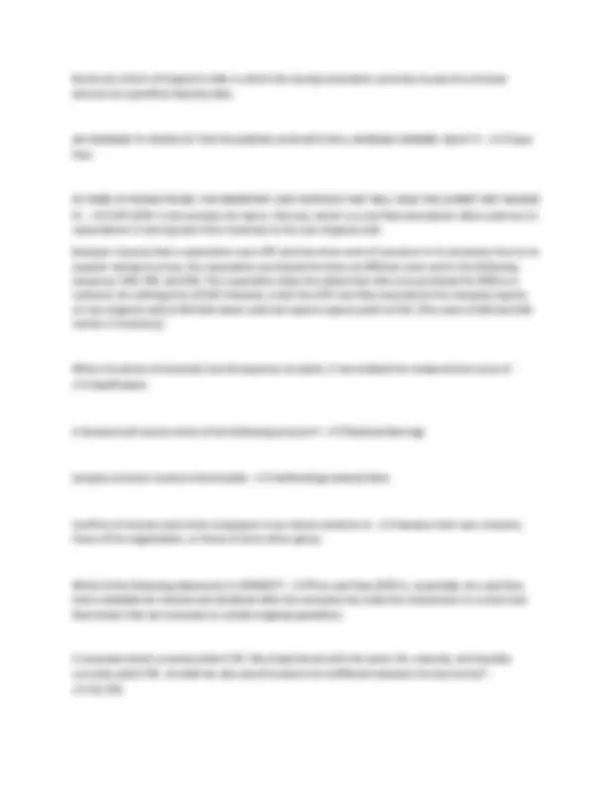
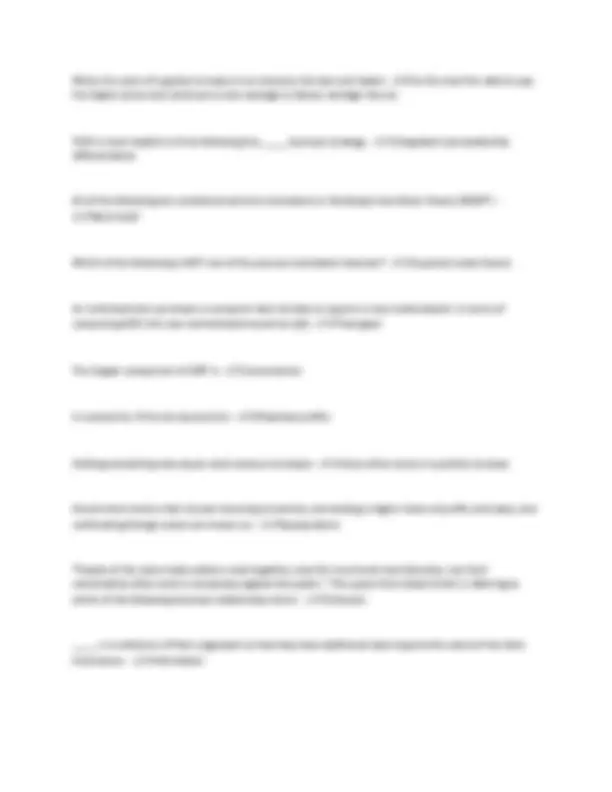
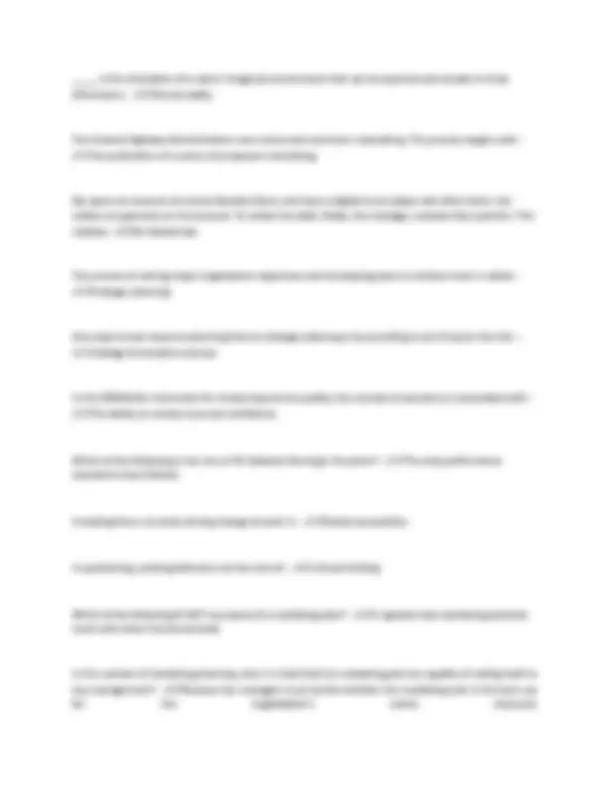
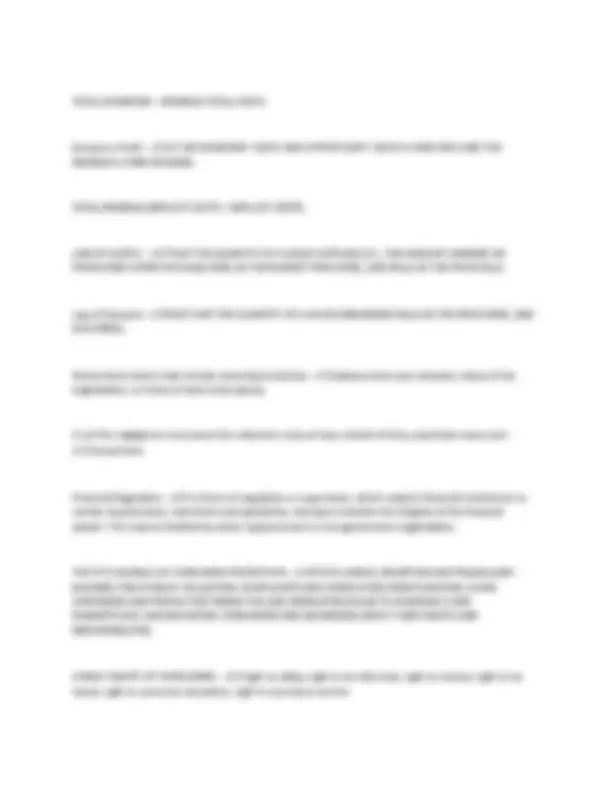
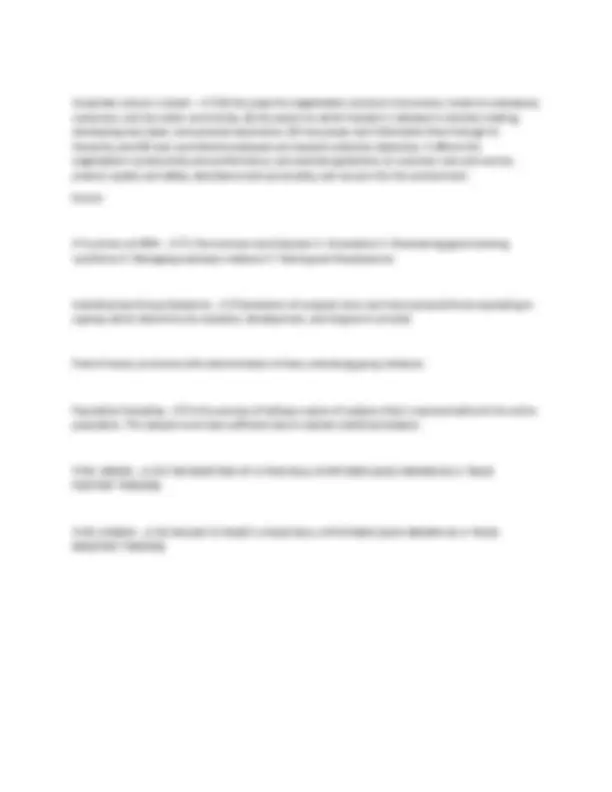


Study with the several resources on Docsity

Earn points by helping other students or get them with a premium plan


Prepare for your exams
Study with the several resources on Docsity

Earn points to download
Earn points by helping other students or get them with a premium plan
Community
Ask the community for help and clear up your study doubts
Discover the best universities in your country according to Docsity users
Free resources
Download our free guides on studying techniques, anxiety management strategies, and thesis advice from Docsity tutors
A review of core business subjects like accounting, economics, finance, management, and marketing. It often includes practice questions and answers, with a focus on helping students prepare for the exam across all tested topics. These guides are designed to be comprehensive and aligned with current testing standards to boost confidence and improve performance.
Typology: Exams
1 / 9

This page cannot be seen from the preview
Don't miss anything!






What is a general ledger? - ✔✔A general ledger account is an account or record used to sort, store and summarize a company's transactions.
asset accounts such as Cash, Accounts Receivable, Inventory, Investments, Land, and Equipment
liability accounts including Notes Payable, Accounts Payable, Accrued Expenses Payable, and Customer Deposits
stockholders' equity accounts such as Common Stock, Retained Earnings, Treasury Stock, and Accumulated Other Comprehensive Income
What is the difference between accounts payable and accounts receivable? - ✔✔Accounts payable is a current liability account in which a company records the amounts it owes to suppliers or vendors for goods or services that it received on credit.
Accounts receivable is a current asset account in which a company records the amounts it has a right to collect from customers who received goods or services on credit.
What is the cost of goods sold? - ✔✔The cost of goods sold is the cost of the products that a retailer, distributor, or manufacturer has sold.
What is owner's equity? - ✔✔Owner's equity is one of the three main sections of a sole proprietorship's balance sheet and one of the components of the accounting equation: Assets = Liabilities + Owner's Equity.
What is principles of accounting? - ✔✔Principles of accounting can also refer to the basic or fundamental accounting principles: cost principles, matching principles, full disclosure principles, materiality principles, going concern principles, economic entity principles, and so on. In this context,
principles of accounting refers to the broad underlying concepts which guide accountants when preparing financial statements.
What is equity? - ✔✔Equity can indicate an ownership interest in a business, such as stockholders' equity or owner's equity.
Equity can mean an owner's interest in a personal asset. For example, the owner of a $200,000 house that has a mortgage loan of $75,000 is said to have $125,000 of equity in the house.
What is meant by reconciling an account? - ✔✔Reconciling an account is likely to mean proving or documenting that an account balance is correct.
What is included in cash and cash equivalents? - ✔✔In accounting, a company's cash includes the following:
currency and coins
checks received from customers but not yet deposited
checking accounts
petty cash
Cash equivalents are short-term, highly liquid investments with a maturity date that was 3 months or less at the time of purchase.
money market accounts
U.S. Treasury Bills
commercial paper
What is the difference between an implicit cost and an explicit cost? - ✔✔An implicit cost is present but it is not initially shown or reported as a separate cost.
An explicit cost is a cost that is present and it is clearly shown or reported as a separate cost.
What is the difference between stocks and bonds? - ✔✔Stocks, or shares of capital stock, represent an ownership interest in a corporation. Every corporation has common stock.
When the costs of supplies increase in an industry, the low-cost leader - ✔✔be the only firm able to pay the higher prices and continue to earn average or above- average returns.
TQM is most helpful to firms following the business strategy. - ✔✔integrated cost-leadership differentiation
All of the following are considered extrinsic motivators in Herzberg's two-factor theory EXCEPT: -
✔✔Work itself
Which of the following is NOT one of the process motivation theories? - ✔✔Acquired needs theory
An individual who purchases a computer later decides to acquire a new motherboard. In terms of computing GDP, this new motherboard would be a(n) - ✔✔Final good
The largest component of GDP is - ✔✔consumption
In economics, firms are assumed to - ✔✔Maximize profits
Holding everything else equal, total revenue increases - ✔✔when either price or quantity increase
Government tactics that include removing incentives, demanding a higher share of profits and taxes, and
confiscating foreign assets are known as: - ✔✔Expropriation
"People of the same trade seldom meet together, even for merriment and diversion, but their conversation often ends in conspiracy against the public." This quote from Adam Smith is referring to
which of the following business relationship terms: - ✔✔Collusion
is a collection of facts organized so that they have additional value beyond the value of the facts
themselves. - ✔✔Information
is the simulation of a real or imagined environment that can be experienced visually in three
dimensions. - ✔✔Virtual reality
The Federal Highway Administration uses notice-and-comment rulemaking. This process begins with -
✔✔the publication of a notice of proposed rulemaking.
Kip opens an account at a Lotsa Goodies Store, and buys a digital music player and other items, but makes no payments on the account. To collect the debt, Mako, the manager, contacts Kip's parents. This violates - ✔✔No federal law
The process of setting major organization objectives and developing plans to achieve them is called: -
✔✔Strategic planning
One way human resource planning links to strategic planning is by providing a set of inputs into the: -
✔✔strategy formulation process
In the SERVQUAL instrument for measuring service quality, the concept of assurance is associated with -
✔✔The ability to convey trust and confidence
Which of the following is not one of W. Edwards Deming's 14 points? - ✔✔The only performance standard is Zero Defects
A leading force currently driving change at work is: - ✔✔Global competition
A questioning, probing attitude is at the core of: - ✔✔critical thinking
Which of the following IS NOT a purpose of a marketing plan? - ✔✔It explains how marketing activities mesh with other functional areas
In the context of marketing planning, why is it vital that the marketing plan be capable of selling itself to
top management? - ✔✔Because top managers must decide whether the marketing plan is the best use for the organization's scarce resources
GDP Calculation - ✔✔THE FORMULA FOR GDP IS: GDP = C + I + G + (EX -IM), WHERE "C" EQUALS SPENDING BY CONSUMERS, "I" EQUALS INVESTMENT BY BUSINESSES, "G" EQUALS GOVERNMENT SPENDING AND "(EX -IM)" EQUALS NET EXPORTS, THAT IS, THE VALUE OF EXPORTSMINUSIMPORTS.
Inflation - ✔✔IS DEFINED AS A SUSTAINED INCREASE IN THE GENERAL LEVEL OF PRICES FOR GOODS AND SERVICES IN A COUNTY, AND IS MEASURED AS AN ANNUAL PERCENTAGE CHANGE. UNDER CONDITIONS OF INFLATION, THE PRICES OF THINGS RISE OVER TIME.
Recession - ✔✔IS A SIGNIFICANT DECLINE IN ECONOMIC ACTIVITY THAT GOES ON FOR MORE THAN A FEW MONTHS. IT IS VISIBLE IN INDUSTRIAL PRODUCTION, EMPLOYMENT, REAL INCOME AND WHOLESALE-RETAIL TRADE.
International Trade - ✔✔IS THE EXCHANGE OF CAPITAL, GOODS, AND SERVICES ACROSS INTERNATIONAL BORDERS OR TERRITORIES. IN MOST COUNTRIES, SUCH TRADE REPRESENTS A SIGNIFICANT SHARE OF GROSS DOMESTIC PRODUCT (GDP).
Accounting Profit - ✔✔IS THE MONETARY COSTS A FIRM PAYS OUT AND THE REVENUE A FIRM RECEIVES.
Economic Profit - ✔✔IS THE MONETARY COSTS AND OPPORTUNITY COSTS A FIRM PAYS AND THE REVENUE A FIRM RECEIVES.
Law of Demand - ✔✔SAYS THAT THE QUANTITY OF A GOOD DEMANDED FALLS AS THE PRICE RISES, AND VICE VERSA.
Government tactics that include removing incentives - ✔✔advance their own interests, those of the organization, or those of some other group.
A suit for negligence must prove four elements: duty of care, breach of duty, proximate cause and -
✔✔Actual harm
Financial Regulation - ✔✔is a form of regulation or supervision, which subjects financial institutions to certain requirements, restrictions and guidelines, aiming to maintain the integrity of the financial system. This may be handled by either a government or non-government organization.
6 BASIC RIGHTS OF CONSUMERS - ✔✔right to safety, right to be informed, right to choose, right to be heard, right to consumer education, right to courteous service